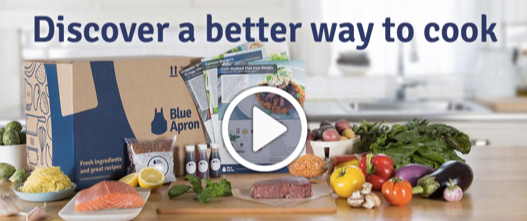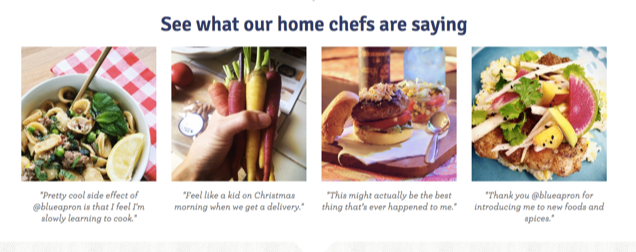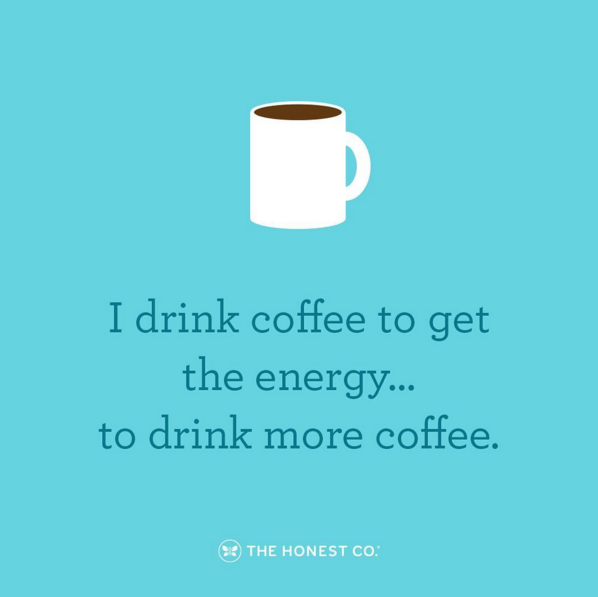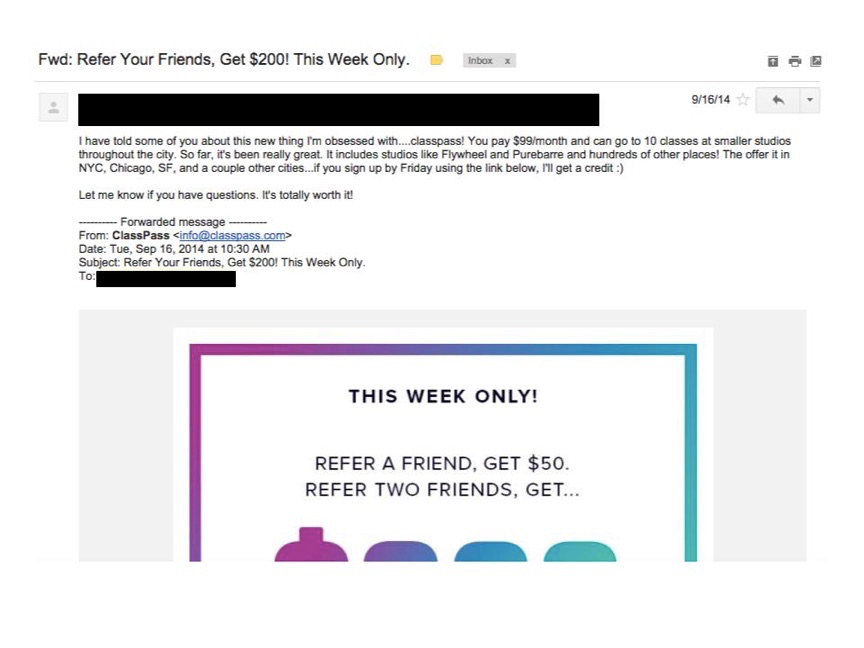As a marketer in 2016 there’s no doubt you’ve read your share of articles about creating product evangelists. We all want to make our customers as excited to share our product with their networks as we are.
But what does evangelizing a product actually mean? Getting your customers to like your Facebook page or mention your service to a friend is valuable. But let’s go further. It’s time to move beyond creating loyal customers to actually creating marketers.
In fact, your customers are the people best prepared to market your product. Think about it. They understand the target customer and can empathize. They already exist in the places where your customers hang out. Best of all, they have a deep understanding of the value your product provides.
Empower them with the right tools, information, and motivation and see how your marketing resources can stretch. Make it easy for them and you will see big results.
In this post I will share specific steps you can take to turn your customers into not just evangelists but marketers.
Give them the information
Your team has the research. You understand the market and have come up with the messaging and positioning for your product. Often, we distinguish between internal and external messaging. You might have a customer facing tagline but an internal mission statement. But why? In an age when businesses are celebrated for their transparency and consumers make choices based on authenticity, there is no reason to maintain that boundary.
In fact, sharing some of that behind closed doors story is the first step to empowering your customers to tell your story.
So, what information should you share? It depends on your product and marketing goals. But I’d start by thinking through what information your marketing team needs to do their job. Some things you might want to consider.
- Your message. Can your customers describe your product or service in one sentence? How about your brand attributes? Give them the information they need to clearly explain to someone else who you are and why you’re awesome. How would they introduce you to a friend?
- Your customers. What are the things that connect the people who use your product or service? Is there an identifying trait or characteristic? Help them see how they are connected to your company and they will be able to identify others with the same potential link.
- Your market. What is the problem you are solving and why is it important to the world we live in today. Help your customers see and feel the problem that they are themselves facing and they will be able to identify it for other people as well.
A detailed PowerPoint presentation might be a good way to share this information with your marketing team, but it’s probably not the best way to communicate with your customers. Instead, consider how you can embed this information within your already existing customer interactions.
Is the messaging clear in your content? How often will your customers encounter your definition of what you do and why? Ideally your customers will see these messages every time they interact with your company.
Blue Apron, the cook-at-home meal delivery service, does a great job of reminding their customers of what the company does and why they love it. Their message is consistent across every channel, helping their customers see themselves in their solution.


Getting some customer feedback here is a great way to make sure it’s sinking in as you intended. For example, you might be sharing your message on your website, in your newsletters, on your packaging, and in every social media profile, but does your customer understand what that means. Do they connect it back to what you do?
Help them see themselves and their experience in your storytelling of your problem solving. Offline events, webinars, videos are all great ways to tell the story of who your customer is and why this solution is important for the world today and next year.
Give them the tools
What are the tactics you are pursuing as a marketer? Whether you are focusing on content marketing, social media engagement, or single promotions, consider how you can involve your customers. Are there tactics or tools you can repurpose or resources you can extend to your customers?
To turn customers into marketers you have to make it easy for them. This means giving them access to the materials they need to execute.
Content
Graphics, images, and videos – these are all easy options to share with your customers.
A mix of type and style will help you get the results you need. Before sharing just anything, I suggest doing some thinking about the type of information that makes people more likely to convert into customers.
For example, is there something that people need to learn to better connect their problem to your solution? Or are people more likely to convert to customers when they get your point of view and sense of humor?
Embed this type of content into your existing content marketing strategy. Create graphics with these messages and short videos you can share on Instagram and Pinterest.
How can you incorporate your messaging in the content? You might add your company branding, or a focused hashtag campaign to the graphics you share on social media. Tools like Canva or Picmonkey are great ways to quickly add this to any image.


Send links in your email newsletters and invite your customers to share with specific calls to action. GIve them some ideas of who to share it with and why.
Channels
Make sure the content is readily available and easily shareable as possible. Share the content on the channels where you intend your customers to market. Is your content ready to be shared and easily customized by your customers? This likely means creating content native to those channels. You could try videos native to Facebook, a perfect Instagram visual, or a Pin optimized graphic on Pinterest.
Continue to share this content and make it available to your customers for when they are ready to market. Like any good social media marketer, we know that content needs to be tailored to the channel where it’s shared. The same goes for your marketing content.
I’d suggest using a scheduler that allows you to quickly adjust your content. My company Viraltag is a great option to support this strategy, though I admit I’m biased. You can organize the content you wish to share here and quickly make adjustments based on channel, then set it to share continuously at the best times to make it available to your customers.
Motivate and Inspire Action
You are motivated as a marketer by your salary, perhaps a personal stake, or even the possibility of a career promotion. What levers do you have available to inspire and incentivize your customers to take on the job?
Affiliate marketing is a great option if you are able to pay commissions to your customers. But money isn’t the only incentive to inspire.
What else will your customers value? It could be credit with your company, a special experience, or exclusive access that earns them social capital.
Now consider how that incentive can tie to the outcome you want. Plenty of companies use a credit reward to encourage their customers to market a product.
For example, here is a current tactic Uber is employing to incentivize customer outreach.

Not only do they use an incentive Uber users will value (credit for more rides), they make it easy for them to execute. Uber already knows which of my friends has not used their service and they pull up a screen to send a text.
Dropbox also does a great job of incentivizing customers to market their product. A customer receives more space based on the number of people they refer. The higher the plan the more space you could earn by referral. By baking the referral program right into the onboarding experience – and making it easy – they used it to grow signups by 60 percent.
Here are some other ideas for how to motivate your customers:
- Give early access to a customer who refers a certain number of clients
- Promote the business of a customer of your B2B service when they give a testimonial
- Invite top customers to an exclusive fireside chat with your CEO to share insights
- Reward them for their social sharing with some special swag
Release some control
We all like a little creative freedom. You would prefer not to have your job dictated by an executive. Your customers will be better marketers for you when you give them the option to make it their own.
Provide the content and the incentive, but then hold back from telling your customers exactly what to do. Because chances are, they know better than you do. For example, this email from my friend about why she loved Classpass was much more meaningful than any message from the marketing team.
Celebrate success with them
Finally, the best part about turning your customers into your marketers is that your incentives are in line. When you win, they win. Celebrate that success together.
Help them see the impact they have had. Did those friends sign up? Let them know.
How many of their friends are using your product? Even if you don’t have a social angle involved in your service or company, is there a way to show them who they know has joined them as a customer? People will feel validated when their friends see the same value they do.
When you hit big milestones, tell them about it. Take advantage of those wins to celebrate success with them and acknowledge their contribution. They’ll be happy to help you reach the next one.
Conclusion
As marketers we are always in need of more resources and bandwidth to see the results we know are possible. Outsourcing your marketing plans to your customers can help you meet those goals.
Arm them with the tools and information they need, motivate them with incentives they value, and then allow them the freedom to reach new customers in their own way and you will be celebrating success together.
Best of all, when you begin to value the same outcome, their connection to your company will only deepen. You’ll not only extend your brand’s reach but also your customer retention.
About the Author: Jilly Badanes is the Director of Marketing at Viraltag, a marketing tool for visual social media. She writes about visual content marketing, social media tools, and Instagram and Pinterest strategies. She is also the host of the podcast The Visual Web. Her writing can be found at Viraltag’s Blog, Social Media Examiner, and Social Media Today.
